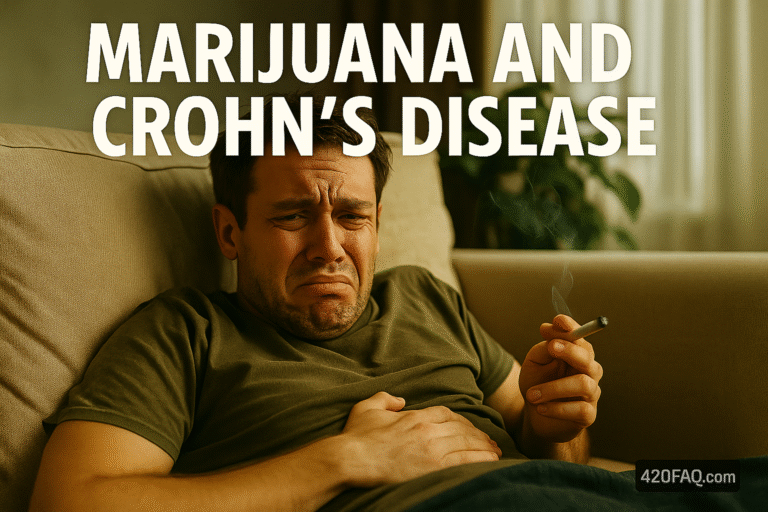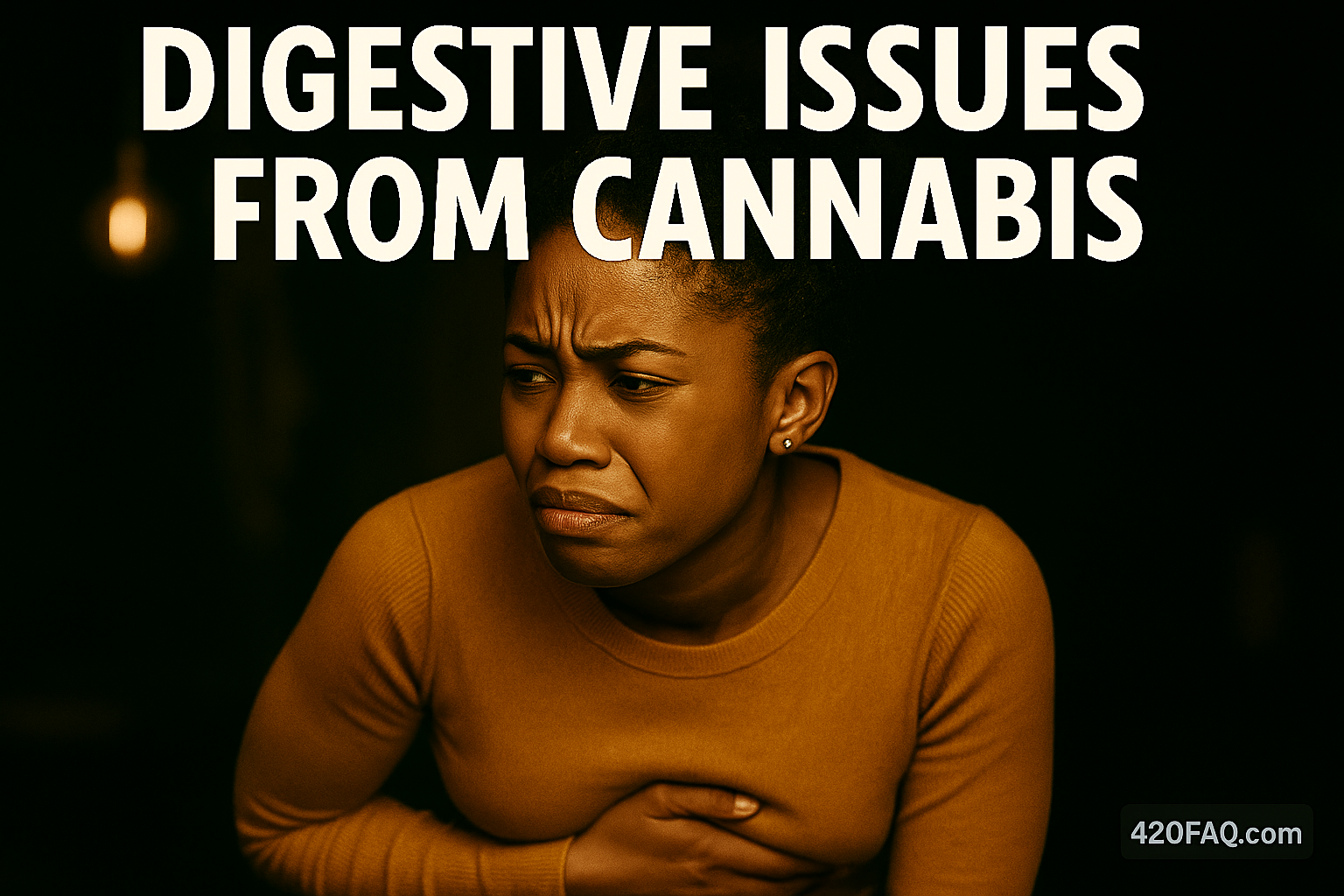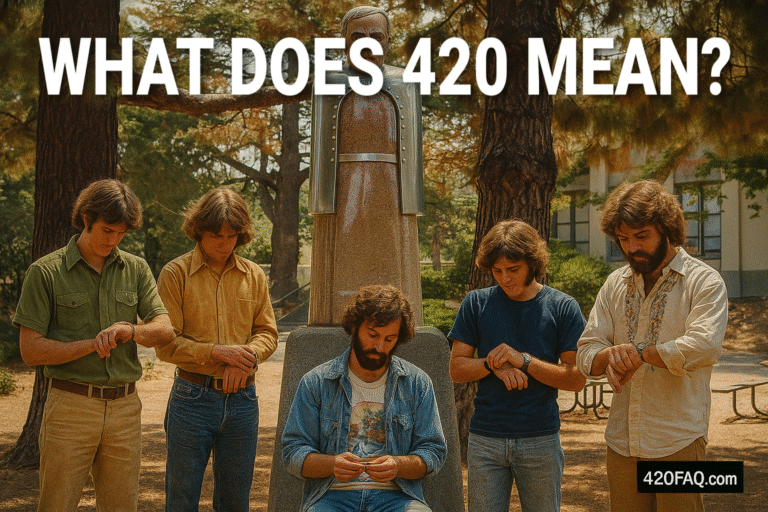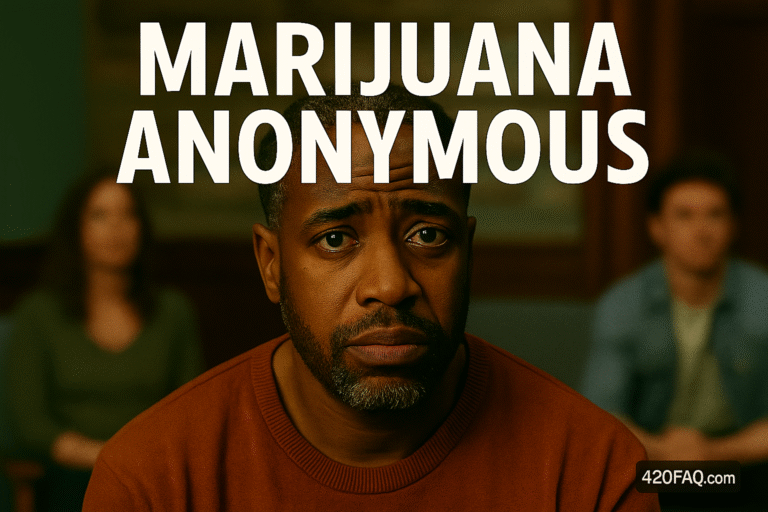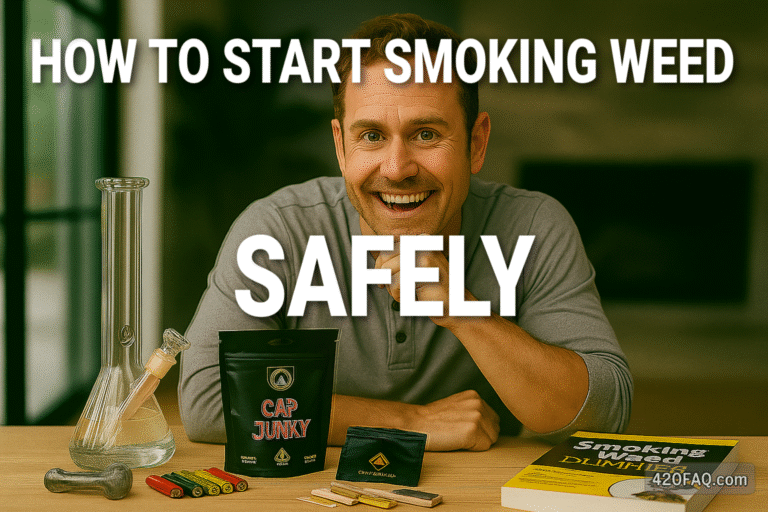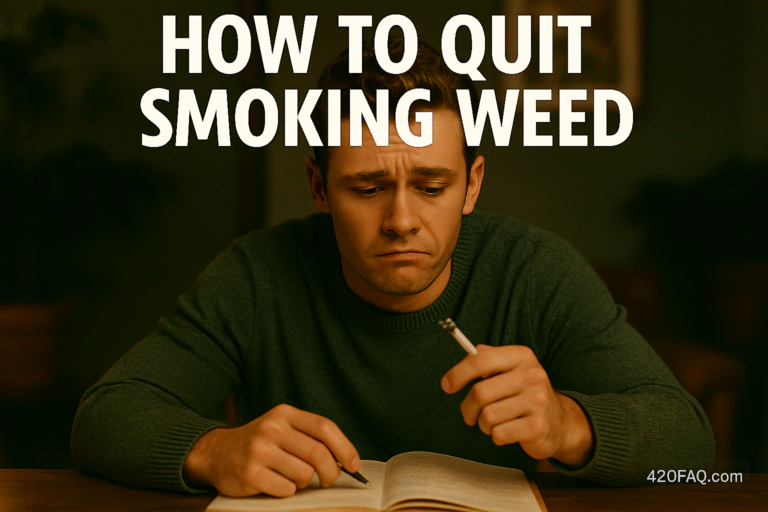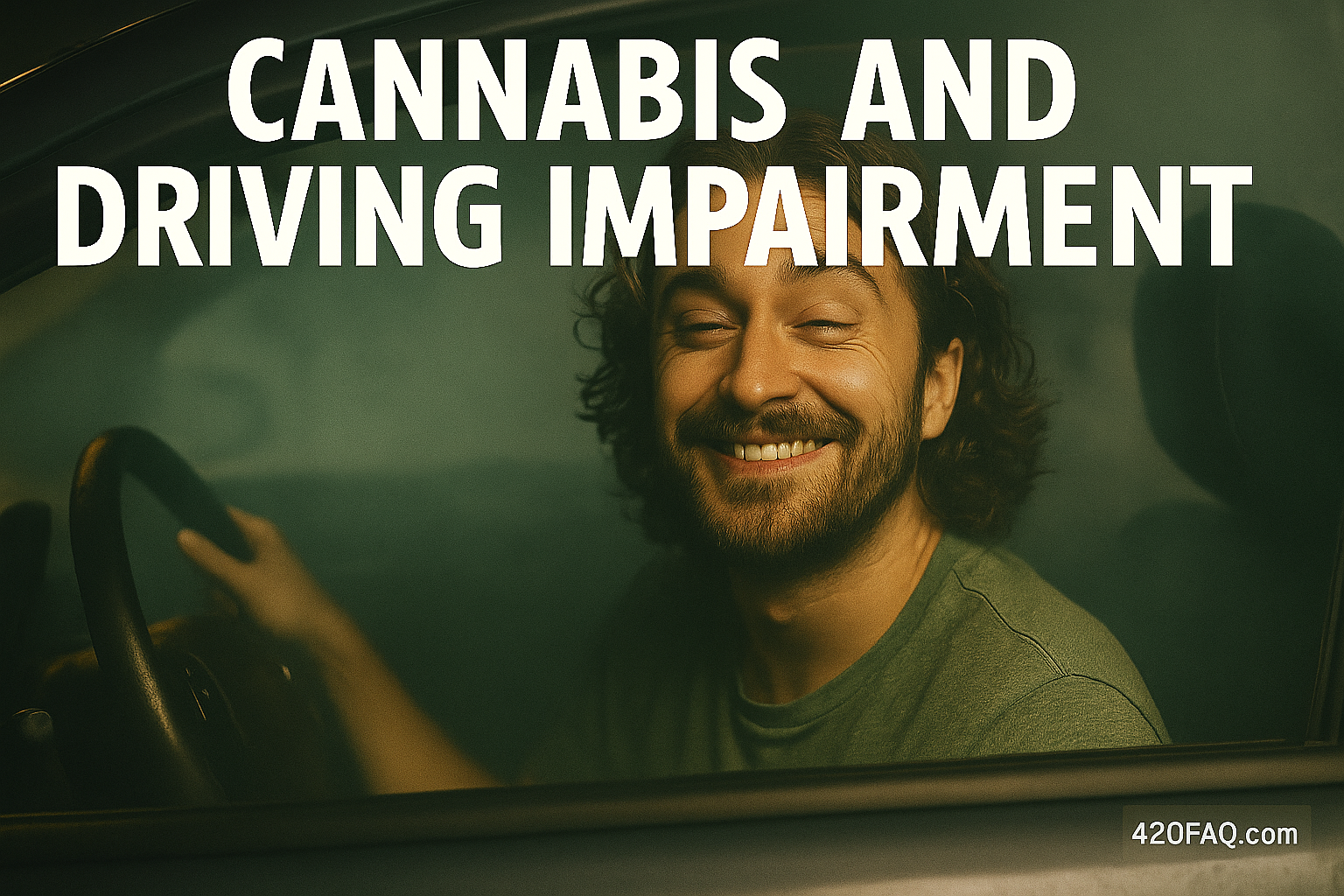
Cannabis and Driving Impairment: Comprehensive Guide to Risks, Detection, and Safer Decisions
Understanding cannabis and driving impairment matters for anyone who consumes THC and then gets behind the wheel. “Impairment” means reduced ability to perform driving tasks safely—things like reaction time, attention, lane control, hazard perception, and decision-making. Unlike alcohol, cannabis affects people unevenly based on dose, route (smoked vs. edibles), timing, tolerance, and co-use with other substances. This guide explains what impairment looks like, how long it tends to last, how it’s measured, what increases risk, and how to make safer choices.
Understanding Cannabis Pharmacology and Impairment
THC (delta-9-tetrahydrocannabinol) binds to CB1 receptors in the brain, altering attention, time estimation, coordination, working memory, and risk assessment. These neurocognitive changes can translate to driving deficits: slower responses to sudden events, wider lane variability, difficulty tracking moving objects, and reduced ability to divide attention across mirrors, gauges, and the roadway. Edibles often produce delayed onset with longer duration, while inhaled cannabis peaks quickly and declines sooner. CBD is not reliably impairing alone, but products labeled “CBD” may contain THC; always verify content.
The Time Course of Impairment After Use
Impairment does not equal mere detectable THC. Peak subjective “high” and peak impairment usually occur within 15–60 minutes after smoking or vaping and then decline over 3–6 hours for many users. Edibles often peak 1–3 hours after ingestion and can affect performance for 6–10+ hours depending on dose and individual differences. Heavy, chronic use and high-potency concentrates can extend functional effects. Residual fatigue, altered sleep, or rebound effects may further degrade next-day performance even when acute intoxication has faded.
How Impairment Is Measured: Field, Blood, and Oral Fluid Tests
Law enforcement uses multiple tools to assess impairment: standardized field sobriety tests (gaze nystagmus is less reliable for cannabis; divided-attention tasks, Romberg timing, and walk-and-turn are more informative), oral fluid screens for recent THC, and blood tests for active THC. None is a perfect “impairment meter.” Blood THC can lag or persist after behavior recovers, and frequent users may maintain measurable THC with little observable deficit. Nonetheless, many jurisdictions treat specific levels (per se limits) as presumptive impairment. Practical takeaway: avoid driving for several hours after use, and longer after edibles or high doses.
Key Driving Skills Affected by THC
Cannabis can degrade: • Reaction time and braking latency during surprise hazards. • Lane position control, with increased weaving or variable steering corrections. • Divided attention, such as scanning mirrors while tracking traffic and signage. • Speed choice stability—some drivers compensate by slowing, which can still be unsafe if inconsistent with traffic flow. • Decision-making under time pressure, including gap acceptance at intersections. Deficits are often subtle until a complex, fast-changing scenario (merging, sudden stops) exposes them.
Factors That Increase Risk on the Road
Risk rises with: higher recent dose; shorter time between use and driving; edibles (due to delayed, prolonged effects); concurrent sleep loss; unfamiliar roads; night driving; bad weather; and driver inexperience. Physiological factors—body mass, metabolism, and tolerance—shape both onset and recovery. Tolerance may dull subjective “high,” but objective driving deficits can persist even when you feel “fine.”
Alcohol + Cannabis: Multiplicative Risk
Alcohol and cannabis together are more dangerous than either alone. Alcohol reduces inhibition and judgment; THC alters attention and reaction time. Combined use magnifies lane weaving, hazard misses, and delayed braking. If you’ve used alcohol at all, adding cannabis makes driving notably riskier.
Crash Risk: What the Evidence Shows
Epidemiological and simulator studies generally find elevated crash risk after recent cannabis use, especially within the first few hours post-consumption and in complex driving environments. Estimated risk increases vary across studies due to differences in dose, users, roads, and measurement methods, but the pattern is consistent: the closer in time you are to use—particularly high-dose inhalation—the higher the risk.
Legal Landscape and Consequences
Many regions prohibit driving with cannabis impairment and may set per se THC limits in blood or define impairment behaviorally. Penalties can include fines, license suspension, mandatory education or treatment, higher insurance costs, and criminal charges if injuries occur. Even where cannabis is legal to possess, impaired driving is not. Medical authorization does not exempt drivers from impairment laws.
Common Myths and Misconceptions
• “I drive better high.” People sometimes report “hyper-focus,” but controlled studies show slower reactions and poorer divided attention. • “Coffee cancels weed.” Caffeine can mask sleepiness, not restore complex cognition or coordination. • “If I’m not ‘high,’ I’m safe.” Subjective sobriety can return before full performance does, especially after edibles. • “Vaping micro-hits is fine.” Small doses add up. Impairment is about timing and total exposure, not just form factor.
Practical Harm-Reduction Strategies
Plan your ride before you consume. Give yourself a wide time buffer after use—several hours for inhaled cannabis and longer for edibles or high-potency products. Avoid mixing with alcohol or sedating meds. If you feel slowed, distractible, or “floaty,” do not drive. Choose rideshare, public transit, a sober driver, or postpone the trip. Late-night and weather-challenged driving demand even more caution.
Research and Scientific Understanding
Ongoing research is refining how we link measurable THC to real-world impairment, accounting for tolerance, product potency, and route of administration. For public-facing summaries and overviews of current findings, see the CDC’s page on Cannabis and Driving and the encyclopedic review at Cannabis and impaired driving. These resources outline known effects on driving tasks, crash risk, and legal frameworks in accessible language.
Frequently Asked Questions About Cannabis and Driving Impairment
How long should I wait to drive after smoking?
Many users show the most impairment within the first 3 hours after inhalation. A conservative buffer is at least 6 hours after moderate smoking or vaping, and longer after large doses or concentrates. Individual variability is high—if any effects linger, don’t drive.
What about edibles—when is it safe?
Edibles often peak 1–3 hours after ingestion and can affect performance 6–10+ hours. High doses can stretch longer. Because onset is delayed and variable, plan transportation before you eat an edible.
Does CBD impair driving?
CBD alone is not reliably impairing at typical doses, but products may contain THC. If a product has measurable THC—or makes you drowsy—treat it as potentially impairing.
Can I be charged if I’m a medical patient?
Yes. Medical authorization doesn’t permit impaired driving. Laws focus on fitness to drive, sometimes with per se THC limits or behavioral evidence from field tests.
Do tolerance and daily use protect me?
Tolerance can reduce the feeling of being high, but measurable deficits can persist. Frequent users may underestimate risk; objective performance, not just how you feel, determines safety.
Are roadside saliva tests accurate?
Oral fluid tests can indicate recent THC exposure but don’t perfectly map to impairment. They’re one tool among observations, field tests, and sometimes blood analysis.
What’s riskier—driving a bit slow while high or normal speed?
Compensatory slowing doesn’t fix divided-attention problems and can itself create hazards if it disrupts traffic flow. The safest option when recently using THC is not to drive.
Is next-day driving affected?
After heavy late-night use or poor sleep, some people report next-day sluggishness or fog. If you feel off the next morning—especially after high-dose edibles—delay driving.
How does cannabis compare to alcohol for crash risk?
Alcohol substantially elevates crash risk in a dose-dependent way. Cannabis alone elevates risk more modestly on average but can still be significant—especially at higher doses or in complex conditions. Combined use is worse than either alone.
What’s the safest rule of thumb?
If you’ve used THC in the last several hours—or you still feel altered—don’t drive. Line up a sober ride, wait it out, hydrate, and rest.
Conclusion
Driving is a demanding, split-second task. Cannabis can compromise the cognitive and motor skills that keep you—and everyone around you—safe, with the greatest risk in the hours after use and when combined with alcohol or fatigue. Give yourself time, plan alternate transportation, and be conservative with edibles and high-potency products. Better margins mean fewer close calls and safer roads for all.


